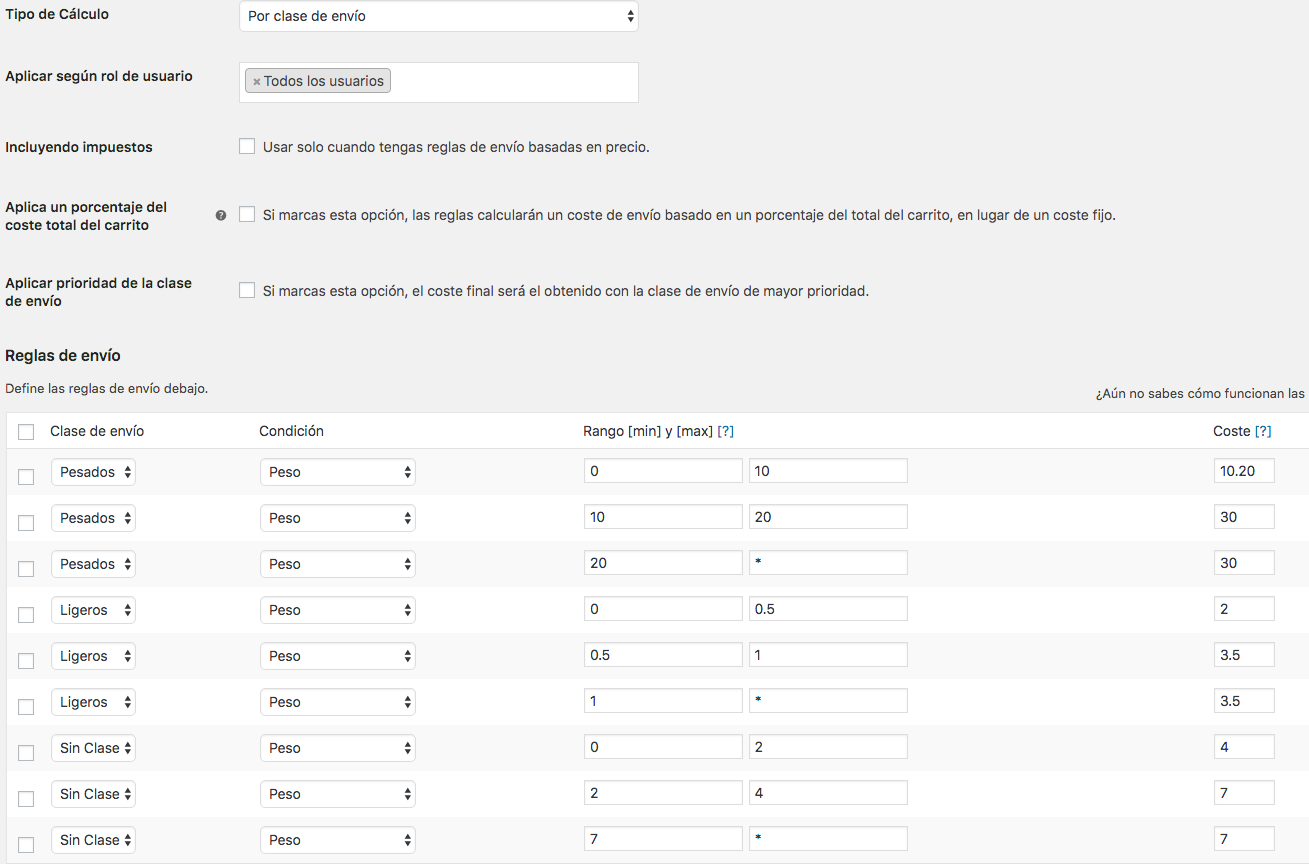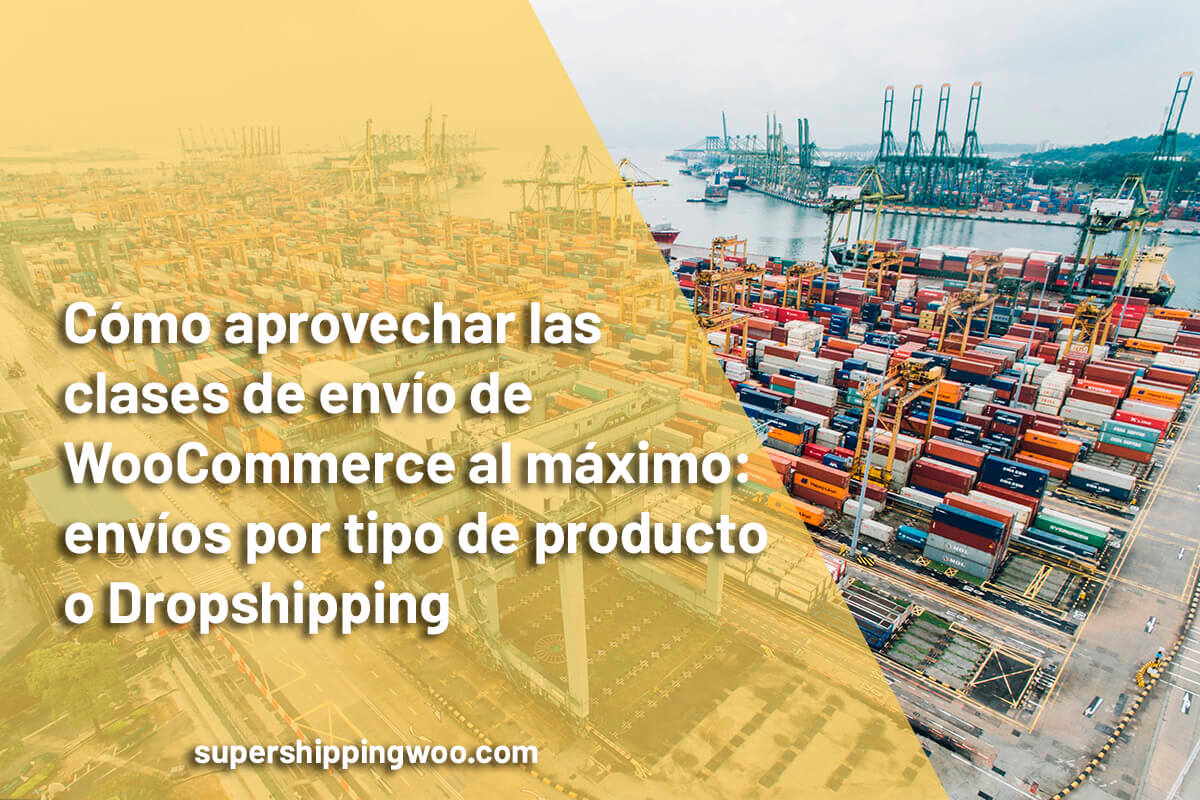In our previous post, we explained in detail how to configure shipping classes and apply them to products in the online store to achieve prices applied to specific products in our catalog.
However, in that post, we only covered the basics of what we can do with shipping classes, and we saved for a more leisurely development how we can use this WooCommerce configuration to help us have much more comprehensive shipping costs depending on the product type and, additionally, their weights, the number of units in the cart... All of this is possible thanks to the combination of classes and Super Shipping for WooCommerce. Let's take a look!
How to offer shipping costs based on the type of product in a single method
In our examples from the previous post, we saw that with the default WooCommerce shipping, we could only assign shipping prices to classes using one method per class. This was a bit cumbersome and not very useful for customers in our online store. However, Super Shipping for WooCommerce allows you to add multiple shipping classes to a single method, which means you only have to create, for example, one Zone, one method with Super Shipping, and then, within the configuration, add several rules that can include different classes and, of course, conditions.

As seen in the image, we have added several rules to a shipping method (which we have named, for example, "Correos Express 24 Hours," the name the customer will see in the cart) using various classes (therefore, these rules will apply to products assigned to those classes) along with their respective conditions (in this case, "weight," but any of the other eligible conditions such as "number of items," "price," or "volume" can be chosen).
This way, if someone adds a product from the "heavy" class to the cart, they will only see the assigned price that matches the weight condition and the designated range. However, if they add a product from the "light" class to the cart, the price we configured specifically for those products will be displayed.
Products that do not belong to any class, because we haven't created one specifically for them, will appear as "without class," which is the default when creating a new shipping method with Super Shipping.
As you can see, thanks to our advanced shipping plugin for WooCommerce, you have the opportunity to set shipping costs based on the type of product, but also based on their weight, price, or any of the conditions included in Super Shipping. Awesome!
What happens if someone adds products from various class types to the cart?
Everything is well-planned, fortunately. By default, Super Shipping will add up the shipping costs of the products in the cart based on their classes. In other words, continuing with the previous example, if someone adds a "heavy" product and a "light" product, or even a "sin clase" (without class) product (regardless of the number of items, as this will be calculated by the condition, which in the case of weight will be adjusted to the established range), the plugin will display a single shipping price resulting from the sum of the price corresponding to each class. Referring to the previous image, for instance, the cost of the heavy product might be 10.20€ and the cost of the light product might be 3.5€, so the displayed price in the cart will be 13.70€.
But of course, what if we don't want the costs to be added up? Many customers might be discouraged from purchasing if they see excessive shipping costs. For such cases, Super Shipping for WooCommerce offers an option called "Shipping Class Priority." With this configuration, we can establish which price to display specifically. There are two ways to do this:
- Setting a higher priority for one class over another. If we give the "heavy" class a higher priority than the "light" class, we will ensure that only the cost of the "heavy" products is displayed when there are two products from both classes in the cart. The costs of the "light" products will not be taken into account.
- Setting a similar priority for each class. With this configuration, what we will achieve is that the plugin will display the higher-cost price among those it needs to show. In the previous example, it would only show the price of 10.20€ in the cart.

As you can see, there are different possibilities for displaying our shipping prices to the customer. This is very interesting because if we have different shipping costs, it's always a good idea to carefully consider how we want to apply them to our customers so as not to discourage them at such a crucial point in the purchasing process as the Cart, which is the step right before completing the purchase. We need to ensure that the abandonment rate at this stage is minimized because we're on the verge of making a sale!
Applying shipping classes to a Dropshipping store with Super Shipping for WooCommerce
In the same way that we've seen how to use shipping classes to group products and apply specific costs for sending them, this approach can also be applied to an online store that operates through Dropshipping. This is because it's common for each supplier to handle the shipping of their own products, and naturally, their shipping prices will vary significantly.
Therefore, it makes sense to create a shipping class for each supplier. By doing this, we ensure that the shipping costs displayed in the cart reflect the prices set by each supplier (you can find detailed explanations on how to configure this in the Super Shipping documentation). As we've seen earlier, we can then decide whether to add up prices, apply only the highest cost, or only apply the cost of a specific class. This approach prevents us, as intermediaries, from losing money by establishing fixed prices that might end up being lower than what some of the suppliers charge us later on. The combination of WooCommerce, Super Shipping, and your Dropshipping store is a definite YES.
In conclusion, shipping classes offer us endless possibilities when applied to the configuration of shipping costs using Super Shipping for WooCommerce. This allows us to further expand the range of price options we present to our customers in our online store. Because we'll keep emphasizing: shipping costs are one of the most critical factors to consider when creating an e-commerce business. Often, they determine whether potential buyers decide to complete a purchase. And we definitely don't want to lose customers, right?


